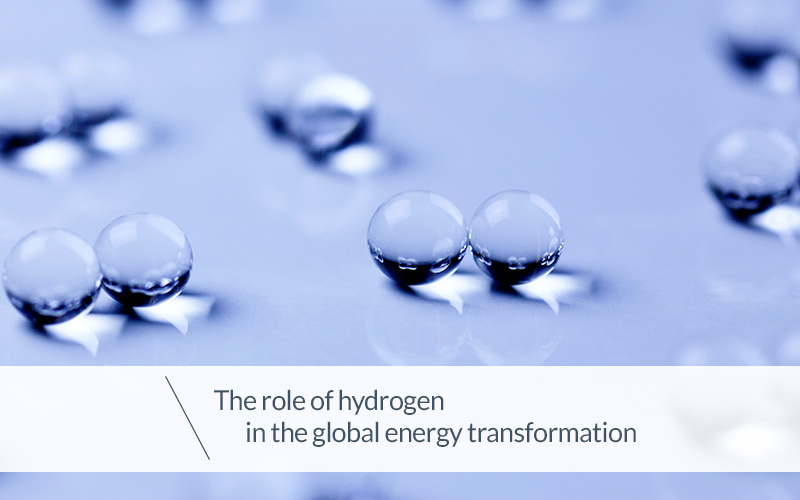
The global energy transformation is now a reality, and if we try to identify its underlying causes, we find global warming, lack of combustible fossil fuels, sustainable growth, reduction in production costs of renewable fuels, electrification and technological progress as some of the main drivers behind it.
The way in which we produce energy in the world demands a transformation, a change in gear, which can only be defined as momentous because the challenges we must face are both urgent and complex.
The transformation, therefore, will need to advance much more quickly compared to the pace of just a few years ago, and begins with the process of decarbonisation which is already underway, albeit very slowly.
Electrification cannot be separated from clean energy sources
As can be read in the report “Global Energy Transformation: A Roadmap to 2050” published by IRENA, the International Renewable Energy Agency, the process of electrification, for many aspects considered to be a likely route for CO2 emission reduction, cannot be separated from renewable energy.
“Electrification is emerging as a key solution for reducing emissions but only if paired with clean electricity, which increasingly can be sourced at the lowest cost from renewable energy.”
Francesco La Camera, Director-General of IRENA, declared in the opening section of the report that clean electricity, matched by a profound level of electrification, could in fact reduce carbon emissions by 60%.
This need, which translates to colossal production and infrastructure overhauls, could also generate economic growth, new job opportunities and business development, without overlooking the benefits in terms of public health, currently threatened by pollution and emissions into the atmosphere.
Hydrogen - the renewable energy source in which to invest
As compared to the current energy system, based on combustible fuels, a system relying on renewable energies with hydrogen and electricity as core elements would be much more sustainable.
To date, this route is not being thoroughly investigated for various reasons:
- Hydrogen production from low carbon emission energies is currently quite expensive.
- The development of hydrogen infrastructures is slow and therefore adoption is held back.
- To date, it is almost entirely supplied from natural gas and carbon.
- Current regulation limits the development of a clean hydrogen industry.
Today, however, we are beginning to realize this could be a viable option to reduce emissions, which can be both effective and economical with some years of development, as demonstrated by the study “Path to hydrogen competitiveness - A cost perspective” by the Hydrogen Council.
“Scaling up existing hydrogen technologies will deliver competitive low-carbon solutions across a wide range of applications by 2030 and may even offer competitive low-carbon alternatives to conventional fuels in some segments. Yet, to reach this scale, there is a need for investment, policy alignment, and demand creation.”
How can hydrogen drive global energy transformation?
Hydrogen can assist in tackling various critical energy challenges and can indeed drive the global energy transformation.
How can it do that?
- By creating solutions to decarbonise a whole range of sectors, including long-haul transport, chemical, iron and steel products (sectors where it is notoriously difficult to reduce emissions).
- It can help in improving air quality.
- It can strengthen energy safety.
Also, remember that hydrogen is a very versatile raw material.
Indeed, current technology allows us to use hydrogen to produce, store, move and use energy in different ways. A large range of fuels can produce hydrogen, including renewable and nuclear energies, natural gas, coal and petroleum.
It can be transported as a gas via pipelines or as a liquid on ships, just like liquid natural gas (LNG). It can be converted into electricity and methane to run households and feed industries, and into combustibles for cars, trucks, ship and possibly planes.
Don’t forget that hydrogen can also be used to store energy from renewable sources for how long it needs to be kept. In this way, hydrogen and hydrogen-based fuels can be used to transport energy from renewable sources across great distances, from territories with high capacity for wind or sun resources, such as Australia and Latin America, to areas with lower capacity.
What happens next?
According to the study “The Future of Hydrogen” by IEA - International Energy Agency – published at the 2019 Japan G20 summit, we need to exploit four opportunities in the short term to increase hydrogen adoption as a clean and widespread solution.
Here they are:
- Make industries, in particular, the chemical and refinery industries which already use hydrogen, but recovered from fossil fuels, into hubs for easing in the process of producing cleaner hydrogen. This would also decrease production costs.
- Exploit existing infrastructures (for example natural gas pipelines) to build new infrastructures explicitly for hydrogen transport and push for increased adoption.
- Use hydrogen to fuel long-haul transportation in trucks, ships and buses.
- Launch, where possible, international shipping routes to widen the availability of hydrogen, exploiting recent experiences gained with LNG.
In this context, international cooperation is vital to speed up the growth in the use of versatile and clean hydrogen across the world.



